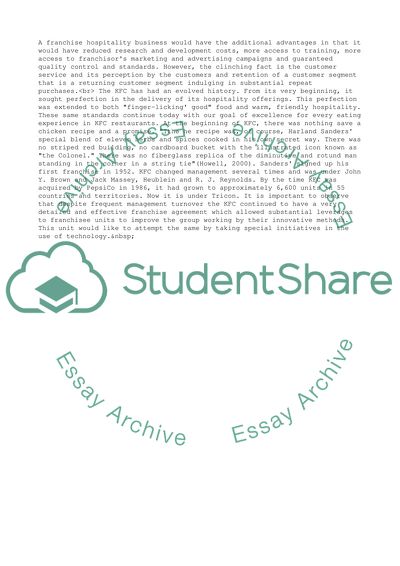Cite this document
(“Contemporary Hospitality Management: KFC Franchisee Chain Term Paper”, n.d.)
Contemporary Hospitality Management: KFC Franchisee Chain Term Paper. Retrieved from https://studentshare.org/management/1507163-contemporary-hospitality-managment-essay
Contemporary Hospitality Management: KFC Franchisee Chain Term Paper. Retrieved from https://studentshare.org/management/1507163-contemporary-hospitality-managment-essay
(Contemporary Hospitality Management: KFC Franchisee Chain Term Paper)
Contemporary Hospitality Management: KFC Franchisee Chain Term Paper. https://studentshare.org/management/1507163-contemporary-hospitality-managment-essay.
Contemporary Hospitality Management: KFC Franchisee Chain Term Paper. https://studentshare.org/management/1507163-contemporary-hospitality-managment-essay.
“Contemporary Hospitality Management: KFC Franchisee Chain Term Paper”, n.d. https://studentshare.org/management/1507163-contemporary-hospitality-managment-essay.


